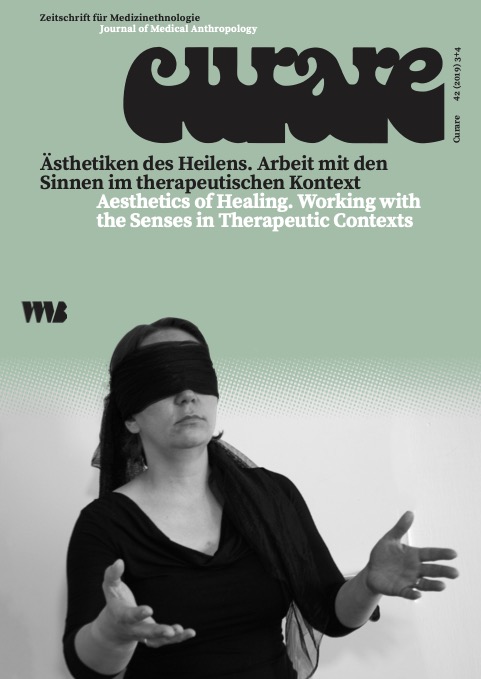The Significant Walks Project
Aesthetic Articulations of Walking, Data, and Place
DOI:
https://doi.org/10.60837/curare.v42i3-4.1610Keywords:
Arts & Health, Visual Art, Physiotherapy, Phenomenology, New MaterialismAbstract
This paper discusses how the Significant Walks (2014) research project explored the impact of walking with chronic low back pain (CLBP). The project involved an interdisciplinary research team working with participants to document how the familiarity of personal walks might be understood as a measure of physical and mental experience. The research methodology combined point of view video documentation of each walk, with simultaneously gathered biomechanical data recording the movement of the spine. Verbal data on pain levels experienced whilst walking was also collected. Additional layers of visualisation were added to the synthesized footage as the team worked with participants to explore how the interpretive aesthetics of visual effects applied to each walker’s documentary film of their walk could further express their experience of walking with CLBP. Driven by the biomechanical data, the intensity of these effects captured interoceptive visual narratives that explored place, movement and sensory perception. Focussing on the importance of real-world experience, the project took research out of the laboratory and clinic to investigate how personal walks might act as a measure of the changing physical experiences associated with chronic low back pain. By engaging directly with each participant’s environment, these encounters revealed how individualised documentation can simultaneously express quantitative and qualitative responses to physical experiences. The research methodology reinstated each participant’s aesthetic interpretation at the core of understanding and engaged with the arts and health agenda, phenomenology and aspects of new materialism. The resulting films act as a communicative interface, conveying the impact and lived experience of the prevalent, but often overlooked, condition of CLBP and exploring the connectivity of human, site, materials, technology and environment.
Downloads
Published
Issue
Section
License
Copyright (c) 2024 Curare. Journal of Medical Anthropology

This work is licensed under a Creative Commons Attribution-ShareAlike 4.0 International License.

